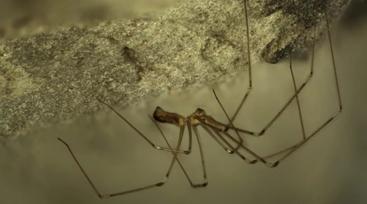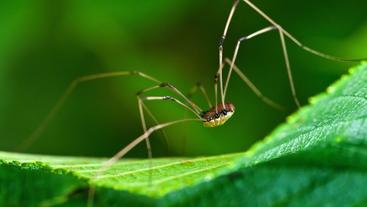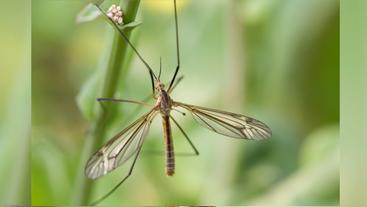You've probably heard this playground legend: Daddy longlegs are the most venomous spiders in the world, but their fangs are too short to bite you. Is this really true?

really the most venomous spiders in the world?
(Image credit: Iain Lawrie via Getty Images)
The short answer: no. But to reach that answer, we're going to have to get a few things straight.
"First, what are you calling a daddy longlegs?" said Rick Vetter, a retired research associate of entomology at the University of California, Riverside. Vetter has been busting this particular myth for years.
The problem is that the term "daddy longlegs" is used colloquially to refer to at least three different animals, only one of which is a true spider.
That animal is also known as a cellar spider, in the family Pholcidae. Like other spiders, it has two body segments, eight eyes and fangs, complete with venom ducts and venom glands.
Then there are harvestmen, which are arachnids in the order Opiliones. Unlike spiders, these animals have a single body segment and only two eyes, and they don't have fangs or venom glands.
"Harvestmen have little grabby mouthparts," Vetter told Live Science. "They look like little pinchers. And they're mostly used for tearing apart prey, dead animals and detritus."

(Image credit: Terry Hadley / EyeEm via Getty Images)
Finally, there are crane flies, in the family Tipulidae. These are insects, not arachnids, and their long bodies and wings make them look like oversize mosquitoes. But unlike mosquitoes, they can't bite you. That's because many species of crane fly have no mouthparts at all. They exist in their adult stage for just a few days — enough time to mate and lay eggs.
Clearly, daddy longlegs aren't just one thing. But what about their venom? Crane flies have none, so for them, this legend is plainly false. Harvestmen don't have venom either — they have poison. Whereas venom works by being injected into the target, poison works either by being ingested or through topical contact. When harvestmen are disturbed, they either spray or coat themselves in a dark, foul-smelling chemical mixture designed to ward off parasites and predators. Though this substance can kill spiders and insects, it's certainly not the world's most toxic poison.
That leaves us with cellar spiders, the only true spiders of the bunch. These can, in fact, bite humans. Their fangs are similar to those of the brown recluse (Loxosceles reclusa), Vetter said, which is notorious for its potentially fatal bite to humans. But that's where the similarities end.
"I'm not aware of any publication showing that pholcid spiders cause a toxic effect in humans," Vetter said. "I think one scientist did some work on that, and he had a little black mark for a day or two and went, 'It's not that big of a deal.' Definitely not the most toxic spider in the world."

mouthparts, so they can't bite.
(Image credit: kerkla via Getty Images)
Venom analysis has confirmed that. On a 2004 "Mythbusters" episode that was later documented in a 2019 study, arachnologist Charles Kristensen reported injecting mice with venom of either cellar spiders or black widow spiders. The black-widow venom had a much more potent effect.
So, if this legend is false, why has it persisted all these years?
"That's a really good question, and I really don't have an answer for it," Vetter said. "I think what happens is, it's something that somebody said once and there was never enough knowledge to refute it. So it just goes on and on. And people love scary stories."

(Image credit: tbradford via Getty Images)
Originally published on Live Science.